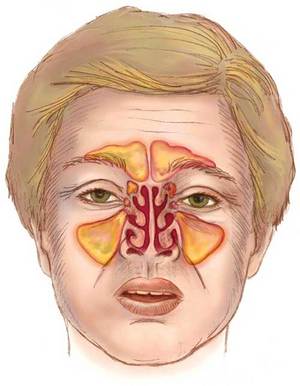Sinus infections are not fun. Just when you think you are getting over your cold, the germs decide to invade your sinuses. And then your head feels like it’s going to explode from the pressure of clogged sinuses. I had a cold last December that developed into a sinus infection. Good thing I had just graduated nursing school and was able to treat my favorite patient: me!
What causes a sinus infection?
Sinus infections are usually caused by allergies or URIs. Common microorganisms responsible for these infections include streptococci and Haemophilus influenzae . If the infection is not treated soon enough and allowed to ascend into your sinuses, you can develop a sinus infection. Once inflammation occurs, your sinuses will not be able to drain fluid from your skull, allowing more bacteria to grow.
What are the signs and symptoms of a sinus infection?
Well, because your sinuses are clogged with bacteria and inflammed, it’s no surprise headaches and facial pressure especially behind the eyes are common symptoms of a sinus infection. The pain is usually made worse when leaning forward, which puts more pressure on the sinuses. Fever, general malaise, and nasal congestion with discharge are also common symptoms of a sinus infection. The buildup of bacteria in the sinuses can lead to bad breath and even loss of sense of smell. A sore throat can occur if nasal discharge is swallowed. Aside from the fever and bad breath, these were the symptoms I experienced with my recent sinus infection.
When to see the doctor
If your symptoms do not improve within 10-14 days, you should see your doctor. Seek medical attention sooner if you develop a fever, notice vision changes, or have a headache that is unrelieved by pain medication. Luckily for me, a doctor visit was not necessary.
Treating your sinus infection
Antibiotics are the preferred medication to treat the symptoms of a sinus infection and should be taken for a full 10-14 days. I chose a decongestant that contained pseudoephedrine to treat the inflammation and help drain my sinuses. I also placed a warm washcloth on my face while laying in bed to relieve pressue as a form of alternative therapy. You can also use the scent of eucalypytus to promote comfort, but I didn’t have any on hand. Oh, and I drank tons of water and juice. Fluids are great for draining the sinuses and liquifying secretions. If you do not respond to pharmacological treatments, you may need surgery.
Preventing a sinus infection
Handwashing is the best way to avoid getting any infection. When you can’t get to the sink, carry around a hand sanitizer. Getting a yearly flu shot can also minimize your chances of developing a sinus infection. Avoid cigarette smoke, which I find very irritating to my sinuses and nasal cavity. Sleeping with your head elevated can also help drain your sinuses. To prevent a recurring infection, make sure you finish all prescribed antibiotics, even if your symptoms are gone.
J Budd is a registered nurse and former broadcast journalist
Sources:
MedlinePlus (US National Library of Medicine, National Institutes of Health), Sinusitis, updated August 2011
LeMone, Priscilla & Burke, Karen (2008). Medical-Surgical Nursing-Critical Thinking In Client Care (4th ed.), Pearson: Prentice Hall, Upper Saddle River, NJ, pp 1235-1238


